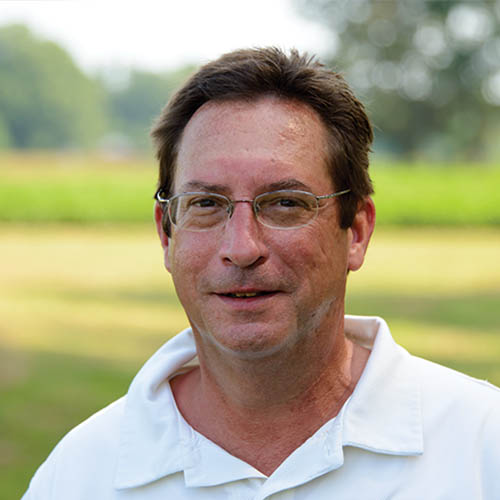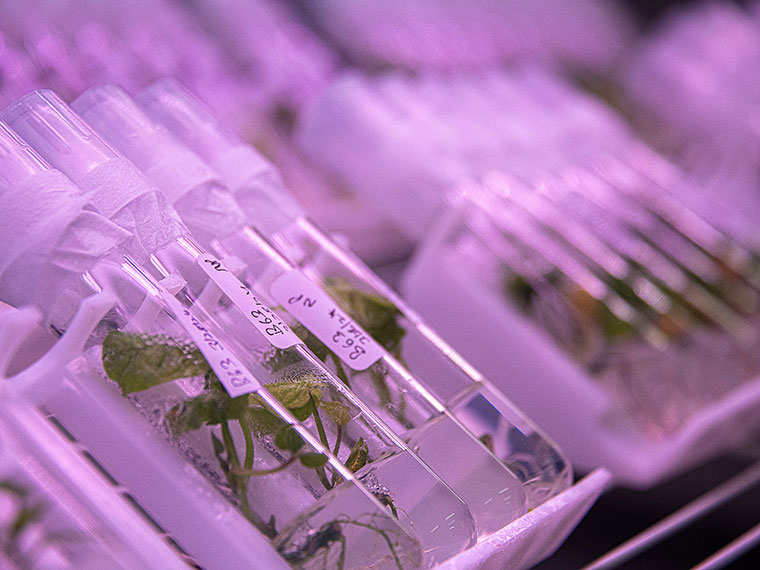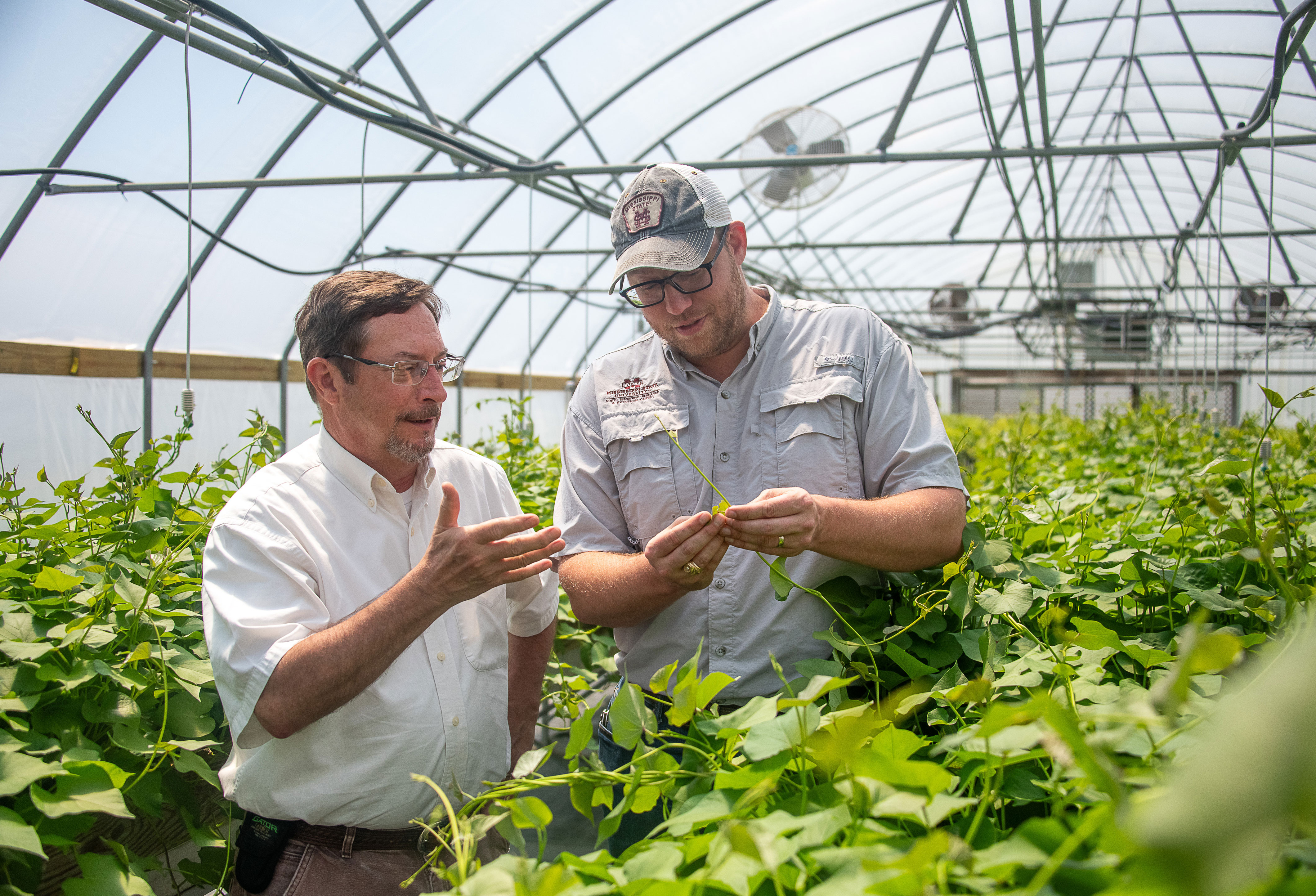Superfood of the South
MAFES researchers help producers, consumers through sweetpotato clean seed
By: Vanessa Beeson
The information presented on this page may be dated. It may refer to situations which have changed or people who are no longer affiliated with the university. It is archived as part of Mississippi State University's history.
Sweetpotatoes are enjoying their time in the sun. They've earned the superfood moniker because they're loaded with minerals, beta carotene, fiber, potassium, and A, B, and C vitamins. The sweetpotato is making its way onto more plates as health-minded consumers opt for the nutrient-dense complex carbohydrate. In the U.S., sweetpotato consumption has risen from about four pounds per person per year in 2000 to nearly six pounds per person per year today. Data Bridge Market Research expects the North America sweetpotato market to grow nearly four percent each year for the next five years and reach $7.7 billion by 2029. Scientists in the Mississippi Agricultural and Forestry Experiment Station (MAFES) are doing their part to ensure sweetpotato producers and processors have the support they need to drive the growing industry, and that support begins with clean foundation seed.
MAFES scientists are leading a multiyear, multi-institutional $4.8 million grant from the U.S. Department of Agriculture's National Institute of Food and Agriculture called the CleanSEED Project that will revolutionize clean seed in sweetpotatoes.
Dr. Mark Shankle, plant and soil sciences research professor and MAFES scientist located at the MAFES Pontotoc Ridge-Flatwoods Branch Experiment Station, is the project's principal director.
"A virus load in your sweetpotato seed stock can cause a yield reduction of 40% or higher," Shankle said. "Our CleanSEED project will ensure the sustainability of U.S. sweetpotato seed programs, which will help producers maximize yield and support the health and growth of the sweetpotato industry as a whole."
Currently, sweetpotatoes are susceptible to over 30 viruses with six of those viruses having a major impact on yield reduction. When a sweetpotato producer plants slips in the ground, then grows the crop to harvest and saves seed for the following year, any existing virus in the plant is carried on to subsequent generations. The longer the producer uses the same seed year after year, the more prolific the viruses get, having a detrimental impact on yield. The CleanSEED Project aims to reduce the reinfection rate of viruses in sweetpotato through a multi-pronged approach.
The project has been industry-driven since its inception. In 2020, the U.S. Sweet Potato Council's National Stakeholder Advisory Committee met at the council's annual convention and declared the threat of virus, pest, and disease problems in sweetpotatoes as a top priority. Shankle and his team secured a Specialty Crop Research Initiative planning grant to host a two-day workshop with industry stakeholders to develop a proposal that addressed research, education, and outreach needs. Following the grant award, the team developed an industry advisory board to guide the project to completion.
In addition to the U.S. Sweet Potato Council, the team also works closely with the National Clean Plant Network.
"Our CleanSEED project works closely with the National Clean Plant Network, which supports six clean plant centers for sweetpotato across the nation and is a service to the industry that provides diagnostics and clean plant material. The research and service come together—the information we get from research results will provide the education and information the National Clean Plant Network needs to make better decisions. Our project is the research arm that will help optimize the service side of things, improving production efficiency at all clean plant centers and at growers' locations," Shankle said.
The team has four overarching objectives. The first goal—unifying terminology and developing quality control standards for clean foundation seed production systems—has been accomplished. Dr. Lorin Harvey, plant and soil sciences assistant professor and MAFES scientist who is a project co-principal director, discussed why this was needed.
"When planning this project, we realized quickly people were using different words and terms to explain the same things. We knew we had to standardize the language to get everyone on the same page," Harvey explained.
Harvey led the team to streamline the regulations of the Association of Official Seed Certifying Agencies (AOSCA), which oversees the grading standards for sweetpotatoes and other specialty crops. The team also worked closely with state crop improvement associations who are AOSCA members who ultimately certify sweetpotato seeds.
Next, the team is developing best practices for efficient clean foundation seed production in both the laboratory and the greenhouse. This includes studying genetics and the environment to grow healthier, hardier plants while maximizing the number of clean plants and performing quality control measures to control viruses in clean foundation seed.
"We're trying to identify best practices, starting in the lab and greenhouses, because all the clean plant centers may do things slightly different. We're focused on determining the best practices for greenhouse plant production that include temperature, fertilizer rate, irrigation, and supplemental lighting to increase field survivability and more," Shankle said.
The team is also finding better ways to detect viruses, pests, and diseases while establishing and evaluating best practices to minimize their source and reinfection rate. This includes establishing methods to identify and test for viruses in the field. The team will also identify weeds that serve as host plants and pests that serve as vectors for viruses to develop herbicide and pest management strategies.
"We're evaluating barrier crops planted next to sweetpotatoes in the field and assessing weeds and pests that may harbor different viruses and determining different management strategies that minimize reinfection rate and maximize generational longevity," Shankle said.
Lastly, the team will conduct an analysis showing the economic impact of using clean foundation seed. After that, they will launch a marketing campaign disseminated through various platforms to increase producer awareness and adoption of clean foundation seed. They'll also include on-farm demonstrations and small-plot research studies focused on the performance and economics of clean foundation seed. They'll conduct surveys, create a producer manual, and develop a video that chronicles clean foundation seed through several generations from establishing nuclear plants in the laboratory to a full harvest of sweetpotato storage roots.
Harvey emphasized how a project of this undertaking promises to impact the industry for the long-term.
"This project is going to impact researchers, certified seed growers, farmers, the industry, and consumers. From the lab to the greenhouse to the field, this will maximize production with the least amount of resource utilization while maintaining virus-free status. The National Clean Plant Network has a phrase, 'Start clean; stay clean.' If this work helps us maintain that virus-free status for longer, we're essentially elongating the useful lifespan of that planting material, which makes it more sustainable. If you can extend the useful lifespan of that seed, you're improving the long-term sustainability of the program by being able to make it more affordable, which makes it more available to more people," he said.
The project includes collaborators from the universities of Arkansas, California and Hawaii, North Carolina State University, Louisiana State University, the U.S. Department of Agriculture's Agricultural Research Service, Mississippi Crop Improvement Association, North Carolina Crop Improvement Association, National Clean Plant Network, and the U.S Sweet Potato Council.
We're trying to identify best practices, starting in the lab and greenhouses, because all the clean plant centers may do things slightly different.
Dr. Mark Shankle
Behind the Science

Mark Shankle
Research Professor
Education: B.S., Ag Mechanization; B.S., Plant and Soil Sciences; M.S., Weed Science, University of Tennessee; Ph.D., Weed Science, Mississippi State University
Years At MSU: 24
Focus: Integrating areas of science to develop sustainable crop production systems that improve crop yield, maximize net profit, and minimize undesirable environmental impacts
Passion At Work: Collaborate with U.S. sweetpotato industry stakeholders to provide an abundant supply of superior, clean foundation seed and develop best practices that improve generational longevity of seed stock.

Lorin Harvey
Assistant Professor and Extension Sweet potato Specialist
Education: B.S., Agronomy, Iowa State University; M.S., Ph.D., Plant Breeding and Genetics, Texas A&M University
Years At MSU: 3.5
Focus: All things sweetpotato
Passion At Work: Addressing real-life on-farm challenges through applied research and extension programs.


